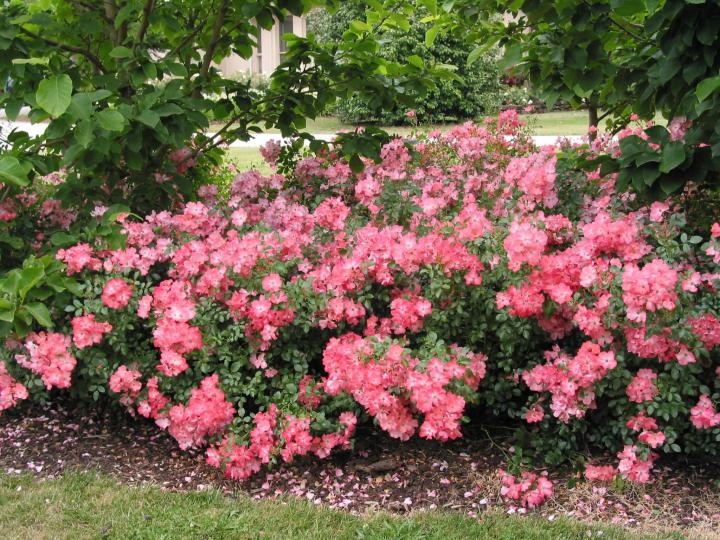
Planting, Growing, and Caring for Roses
The Almanac Garden Planner - Use It Free for 7 Days!
Plan your 2025 garden with our award-winning Garden Planner.
Recipes
Cooking Notes
The tart reddish-orange hips of rugosa roses are used for jams, jellies, syrups, pies, teas, and wine. Check out our Rose Hip Jam recipe.
Rose petals are edible and can be tossed into salads for color, candied to decorate cakes, or distilled to make rose water. Make sure the rose petals are pesticide free.
ADVERTISEMENT
What about Rose Rosette Disease? Any way to treat? Any Roses resistent? Thanks!
Hi, Peggy,
Rose Rosette Disease (RRD) is caused by the rose rosette virus (RRV), which attacks only roses. It is transmitted by grafting (not via sap) or by microscopic eriophyid mites, especially Phyllocoptes fructiphilus. The mites do not crawl far, but can be blown to other roses or carried on tools, clothing, or other materials. They tend to gather near buds, flowers, base of shoots or leaf stems, and leaf scars, including over winter.
All cultivated roses are considered susceptible. Studies are being done to determine if there are resistant rose cultivars/species. At this time, there is no known cure.
Symptoms include witches’ brooms, thickened/elongated stems, many thorns, enlarged canes, distorted leaves or flowers, reddish leaves.
Symptoms may appear months after infection. The virus may survive in the roots (not the soil), and the mites may be on parts of the plant that do not currently show symptoms. Control ultimately is to remove a symptomatic rose, including the roots/rootball. Also keep up with deadheading spent blossoms, as mites tend to gather around there. Always be sure to clean up all plant debris and place in the trash (not compost pile). Avoid using leaf blowers around roses, as they can blow mites onto the plants. Prune symptomatic branches; if after pruning, new growth also shows signs of disease, it is best to remove the entire plant, including rootball. Also prune heavily in late winter/early spring, when the plant is dormant, and then apply dormant oil. Remove wild roses (such as Rosa multiflora) that are nearby, as they are a common host to the disease. A monthly treatment of horticultural oil (except in hot weather) can help. Avoid overcrowding planting sites; mixing roses with other plants can help minimize the spread of the disease. Make sure to keep plants healthy and unstressed, so that they can best fight the disease. If a rose is removed, wait at least 1 to 2 months before planting a new one in the same spot. Inspect plants often to check for symptoms.
Hope this helps!
When and how to I move rose bush to another location
The best time to move a rose bush is during the dormant season in early spring after the threat of frost is over. Cut the rose canes back to 10 to 12 inches and remove any foliage so the plant can focus on root development after transplanting. Choose a new place with good drainage. Dig your hole. Remove the rose by digging far enough away from the root ball so you don’t damage the roots. Take as many of the roots with you as possible and gently transfer to the new hole. If it is too large to carry, place it on a tarp and drag it to its new home. Amend the soil. In a bucket or wheelbarrow, mix equal parts mulch, potting soil, and peat moss. Add half of this mixture to the hole around the roots. Water the soil well when the planting hole is half-filled and let the water settle. Adjust the rose as needed if the soil has caused it to sink a bit. Add the remaining soil mixture and water again. Water the new rose every day for a week or two depending on your weather. Do not fertilize or use any insecticides until you see new growth on the rose.
Please tell me how to preserve my bouquet of yellow roses I got over the weekend.. I was told to drop an aspirin in the water
Article re roses says to prune in the Spring but it also says to cut tall canes back to 30” in Fall. Which is it?
Major pruning and shaping should be done in the spring before new growth appears. In the fall, do minor pruning tasks such as pruning extra-long or dead canes.
Hi Martha, Thanks for your question. We certainly understand why you want to keep that bouquet of yellow roses looking beautiful for as long as possible. One thing you will want to do is give your roses fresh water after 4 or 5 days. Wash out the vase, rinse off the stems of any slimy residue, and give them a fresh cut at the bottom to allow for better water intake. You can also add more flower food if you have it. Another way to preserve your arrangement is to keep it cool at night—the refrigerator works great. Roses love cool, humid temperatures, so keep them away from direct heat or drafts, which will dry out your flowers.
About 14 years ago we planted two roses, one on each side of a large Pergo archway. Over the years they have grown to the top of the structure, Last year one of them produces a branch from the base of the plant and it produced red flowers. Kind of strange as it has always produced a cream/pink flower. This year there are even more red flowers. Could this be from some lone sleeping plant DNA? I don't know, however it is quite pretty.
The red-flowering branch just has to be from the rootstock that your rose (which you bought) was grafted onto. It is most likely Dr. Huey.













